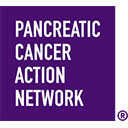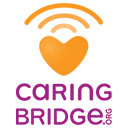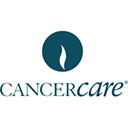About Pancreatic Cancer
Learn more about Pancreatic Cancer
Overview of Pancreatic Cancer
Pancreatic cancer is one of the most difficult diseases to diagnose, mainly because there are no “definitive” symptoms, but also because standard tests often return negative results.
Patients often comment on experiencing a variety of symptoms prior to diagnoses, including unintended weight loss, loss of appetite, nausea, back or belly pain, fatigue and jaundice.
According to the American Cancer Society’s most recent estimates:
- About 62,210 people (32,970 men and 29,240 women) will be diagnosed with pancreatic cancer this year.
- About 49,830 people (25,970 men and 23,860 women) will die of pancreatic cancer this year.
- Pancreatic cancer accounts for about 3% of all cancers in the US and about 7% of all cancer deaths.
- The average lifetime risk of pancreatic cancer for men and women is about 1 in 64.
Pancreatic cancer is the third leading cause of cancer-related death in the U.S., killing more people than breast cancer. It is predicted to become the second leading cause of cancer-related death in the United States around 2030, second only to lung cancer.

Symptoms
Pancreatic cancer may cause only vague unexplained symptoms. Symptoms that may indicate pancreatic cancer include:
- Pain (usually in the abdomen or back)
- Weight loss, jaundice (yellowing of the skin and/or eyes) with or without itching
- Loss of appetite
- Nausea
- Change in stool
- Pancreatitis
- Recent-onset diabetes
If you are experiencing one or more of these symptoms, we urge you to speak to your doctor immediately and reference pancreatic cancer.
Treatment Options:
You are your own best advocate. The Kosten Foundation strongly recommends that you discuss your treatment goals with your healthcare team and know all of your options at every stage of your disease.
Clinical Trials
Pancreatic cancer patients who participate in clinical research have better outcomes. Every treatment available today was approved through a clinical trial. The Kosten Foundation strongly recommends clinical trials at diagnosis and during every treatment decision. Please contact us for assistance in finding clinical trial opportunities in our area.
Pancreatic Cancer Surgery
About 30 to 50 percent of patients who are eligible for surgery are told they are ineligible. The Kosten Foundation strongly recommends you see a surgeon who performs a high volume of pancreatic surgeries (more than 15 per year) to determine eligibility.
Types of Pancreatic Cancer Surgery:
Distal Pancreatectomy
Is performed if a tumor is located within the body or tail portion of the pancreas.
Total Pancreatectomy
When the tumor is situated in such a way that requires the entire pancreas to be removed.
Personalized Medicine
Every pancreatic tumor is different. The Kosten Foundation strongly recommends molecular profiling of your tumor to help determine the best treatment options.
Types of Therapy
Types of available therapy may include chemotherapy, targeted therapy, radiation therapy or others. Patients may also consider complementary and alternative medicine, which refers to therapies that extend outside of the normal practices of conventional medicine..
Specialists and Cancer Centers
Seeing pancreatic cancer specialists, physicians who diagnose and treat a high volume of pancreatic cancer patients, improves outcomes. The Kosten Foundation strongly recommends you consult with pancreatic cancer specialists who have experience diagnosing and treating the disease.
Helpful Resources

American Cancer Society
Definitions
Serous Cystadenomas
Serous cystadenomas are a type of cystic neoplasm of the pancreas. These lesions are more frequent in those greater than age 70 and are more common in women. They are commonly quite large at the time of diagnosis measuring on average 5-8cm. Even though they are large they almost never cause jaundice and uncommonly will block the pancreatic duct. Thus, they are usually asymptomatic and are most usually found on diagnostic imaging performed for other reasons.
When they do cause symptoms it is usually due to compression of surrounding organs such as the stomach which may cause partial obstruction of the intestines. These lesions are benign and can usually be differentiated from other more serious cystic neoplasms by modern diagnostic techniques. In the absence of symptoms, they may be safely observed without surgery.
Mucinous cystadenoma and cystadenocarcinoma
Mucinous cystadenoma is a type of cystic neoplasm. This type of tumor is usually benign when small but can grow and degenerate into a frank cancer. Most patients with these tumors are in their 5th and 6th decade and it is more common in women. Most of these tumors occur in the body and tail of the pancreas. As with serous cystadenomas they can usually be definitely diagnosed with modern diagnostic testing. When small (<3cm) and asymptomatic, most experts feel these lesions can be safely observed provided there is close surveillance with CT scans.
If the lesion is causing symptoms or obstructing the pancreatic duct they should be surgically excised. Even if a cystadenocarcinoma is found, the prognosis is quite good if the tumor can be surgically removed.
Cystic Neoplasms
Cystic neoplasms of the pancreas represent about 10% of all cysts of the pancreas and ~1% of all pancreatic neoplasms. Much has been learned about the natural history and management of these tumors in the past decade. We are finding more of these lesions than in years past since so many patients receive ultrasounds or CT scans for other reasons and these tumors are found incidentally. Cystic neoplasms are subdivided into serous, mucinous and intraductal papillary mucinous neoplasms. These lesions are described separately on this website but a few generalities pertain to all. The most important aspect of these lesions is to recognize them. They must be differentiated from benign pancreatic cysts as the treatment is distinctly different. Differentiation of benign cysts from cystic neoplasms of the pancreas can usually be made by a good history and physical exam by a physician familiar with these disorders.
If a cystic neoplasm is suspected and the patient is symptomatic (abdominal pain), surgical removal is recommended. Most authorities feel that small lesions (<3cm) that do not cause abdominal pain or obstruction of the main pancreatic duct may be safely observed with close surveillance. In contradistinction, lesions larger than 3cm, those that cause symptoms or those that obstruct the main pancreatic duct should be removed not only to relieve symptoms but also because the incidence of cancer is higher.
Our knowledge and treatment of these disorders is rapidly changing and recommendations for treatment may change in the future. Overall, the prognosis for these lesions, even if cancer is present, is markedly better than that for routine pancreatic adenocarcinoma if the these tumors can be surgically removed.


